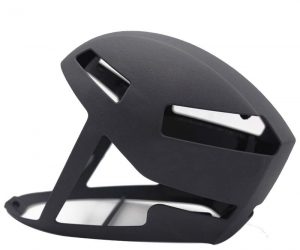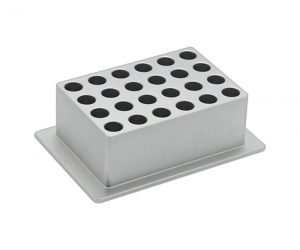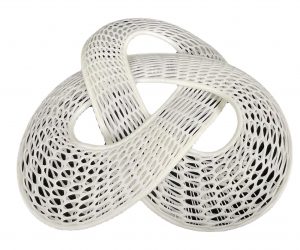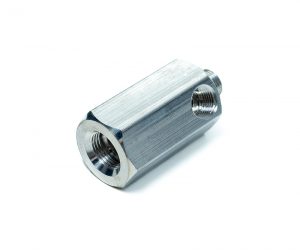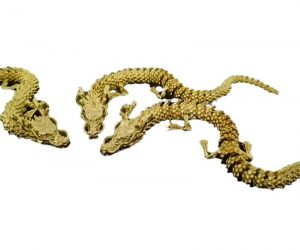Plastic worm gears are becoming essential components in various industries due to their precision, durability, and efficiency. This article explores how these versatile mechanical elements are transforming engineering applications, highlighting their exceptional performance and potential to revolutionize systems across sectors.
Introduction to Plastic Worm Gears
Plastic worm gears are key mechanical components widely used in a variety of industrial applications. These gears consist of a worm—a screw-like gear—and a worm wheel, a cylindrical gear with teeth. The interaction between the worm and the worm wheel facilitates smooth, controlled power transmission. What sets plastic worm gears apart is their growing popularity driven by their unique properties and capabilities. This article will delve into the precision, durability, and efficiency offered by plastic worm gears, and explore how these advantages enhance performance across industries.
The Advantages of Plastic Worm Gears
2.1 Precision: Enhancing Performance and Accuracy
Precision is one of the standout qualities of plastic worm gears. Their design allows for exceptional accuracy in power transmission and motion control. The helical shape of the worm ensures a gradual and smooth engagement with the worm wheel, which reduces noise, vibration, and backlash—common issues with traditional gearing systems. This precise interaction not only improves system performance but also makes plastic worm gears ideal for applications where accuracy is paramount.
In addition to smooth engagement, plastic worm gears offer excellent positioning capabilities. The unique tooth profiles of these gears maximize the contact area between the worm and worm wheel, enabling highly controlled motion. This characteristic is especially valuable in robotics, CNC machines, and medical equipment, where precise movements are required.
2.2 Durability: Built for Demanding Environments
Durability is crucial in any mechanical system, and plastic worm gears are engineered to meet this need. Despite being made of plastic, these gears exhibit remarkable strength and resilience, capable of withstanding high loads, extreme temperatures, and corrosive environments.
Advanced engineering plastics such as nylon and acetal are commonly used in the construction of plastic worm gears. These materials offer low friction, high mechanical strength, and excellent wear resistance. In addition, they are self-lubricating, reducing the need for external lubrication and minimizing maintenance needs. This robust construction ensures that plastic worm gears remain reliable even in challenging industrial conditions.
The use of plastics also provides additional advantages: their lightweight nature reduces the overall weight of gear systems, which contributes to energy savings and increased system efficiency. Moreover, plastic worm gears are non-magnetic and non-conductive, making them ideal for use in sensitive environments such as electronics and medical devices.
2.3 Efficiency: Optimizing Power Transmission
Efficiency is another significant advantage of plastic worm gears. Their unique design—with a large contact area and multiple tooth engagements—results in high-efficiency power transfer. This enables the conversion of low-speed, high-torque input into high-speed, low-torque output, or vice versa, with minimal energy loss.
The self-lubricating properties of the plastic materials further contribute to system efficiency. By reducing friction, plastic worm gears require less external lubrication, lowering energy consumption and minimizing operational costs. This makes them highly suitable for power-sensitive applications such as renewable energy systems, conveyors, and automotive machinery.
Additionally, plastic worm gears operate quietly. The gradual engagement between the worm and worm wheel reduces vibration and noise, making them ideal for systems where noise control is critical, such as in medical equipment or office machinery.
Applications of Plastic Worm Gears
3.1 Robotics and Automation
In robotics, precision and controlled motion are crucial. Plastic worm gears are often used in robotic arm joints, grippers, and motion control mechanisms. Their ability to handle high loads while offering smooth, quiet, and efficient operation makes them ideal for these applications. In particular, the high precision provided by plastic worm gears allows for the intricate movements needed in modern robotic systems.
3.2 Automotive Industry
Plastic worm gears also find applications in the automotive industry, particularly in powertrain systems. They are employed in differential units, steering systems, and windshield wiper mechanisms. These gears contribute to quieter operation and efficient power transmission while reducing the overall weight of the vehicle, which improves fuel efficiency. Additionally, the durability and low maintenance requirements of plastic worm gears make them a reliable choice for automotive components.
3.3 Industrial Machinery
In industrial settings, plastic worm gears are used extensively in conveyor systems, packaging machinery, and material handling equipment. Their high durability and low-maintenance characteristics make them ideal for demanding environments where smooth and reliable operation is essential. The ability to efficiently transmit power in these systems contributes to productivity and reduced downtime in industrial processes.
Design Considerations for Plastic Worm Gears
4.1 Material Selection
Choosing the right material for plastic worm gears is vital for achieving optimal performance. Common materials include engineering plastics such as nylon (polyamide) and acetal (polyoxymethylene), known for their strength, wear resistance, and low friction properties. The material chosen depends on the application’s load capacity, operating temperature, and environmental conditions.
When selecting materials, it is also important to consider compatibility with lubricants and exposure to chemicals in the operating environment. Ensuring material durability in these conditions is critical for maintaining the longevity and performance of the gear system.
4.2 Gear Geometry and Tooth Profiles
The design of the gear geometry—specifically the helix angle, lead angle, and tooth profile—greatly affects the performance of plastic worm gears. These parameters determine gear efficiency, load capacity, and the level of backlash. Optimizing these features ensures smooth engagement, minimal noise, and high power transfer efficiency. Engineers typically use CAD software and simulation tools to optimize gear designs for specific applications.
4.3 Lubrication and Maintenance
While plastic worm gears are self-lubricating, some high-load or high-speed applications may still require additional lubrication to minimize wear. Choosing lubricants that are compatible with the gear material is essential. Regular maintenance—including checking for wear and applying lubrication as needed—helps ensure the longevity and efficiency of the system.
Manufacturing and Assembly of Plastic Worm Gears
5.1 Injection Molding Process
The most common method for manufacturing plastic worm gears is injection molding. This process involves injecting molten plastic into a mold under high pressure to create the gear’s shape and tooth profile. Temperature control, injection speed, and cooling time must be carefully managed to ensure consistent, high-quality production. Steel or aluminum molds are typically used to withstand the pressures and temperatures during the molding process.
5.2 Quality Control and Testing
To ensure the gears meet quality standards, manufacturers employ rigorous testing. Dimensional accuracy, tooth profile, and surface finish are checked using precision measurement tools like coordinate measuring machines (CMM) and optical comparators. Functional testing is also performed to assess the gears’ performance under load, including tests for torque, wear resistance, and noise levels.
5.3 Assembly Techniques
Assembly of plastic worm gears typically involves pairing them with shafts, bearings, and housings. Methods like press-fitting, set screws, or adhesive bonding are used to secure the gears in place. Proper alignment and engagement between the worm and worm wheel are essential for optimal performance. Additionally, appropriate lubrication is applied during assembly to reduce friction and ensure smooth operation.
Real-World Case Studies
6.1 High-Precision Robotic Arm
In one case study, a high-precision robotic arm utilized plastic worm gears to ensure smooth joint movements. The gears' precision and low friction ensured quiet and efficient operation, while their durability reduced maintenance requirements. The lightweight design of the plastic gears also improved the arm’s energy efficiency and responsiveness.
6.2 Automotive Powertrain System
In the automotive industry, plastic worm gears were used in a powertrain system to transmit power between different components. The gears’ durability and self-lubricating properties reduced the need for frequent maintenance, while their lightweight nature contributed to improved fuel efficiency.
6.3 Industrial Conveyor System
Plastic worm gears were implemented in an industrial conveyor system to facilitate precise material movement. The gears' durability and low-maintenance design allowed for continuous operation in heavy-duty environments, enhancing system reliability and reducing downtime.
Future Trends and Innovations in Plastic Worm Gears
7.1 Advanced Materials
Researchers are exploring new composite materials and engineering plastics that offer even greater mechanical properties, such as higher strength and improved wear resistance. These innovations will expand the range of applications for plastic worm gears, allowing them to handle more demanding environments.
7.2 Additive Manufacturing
3D printing and additive manufacturing are enabling the creation of customized plastic worm gears with complex geometries. This technology allows for tailored designs that optimize performance, load distribution, and efficiency, offering greater flexibility in gear production.
7.3 IoT and Condition Monitoring
The integration of plastic worm gears with the Internet of Things (IoT) will allow real-time monitoring of gear performance. Sensors embedded in gear systems will collect data on temperature, vibration, and load, enabling predictive maintenance and further enhancing efficiency.
Conclusion: Unlocking the Full Potential of Plastic Worm Gears
Plastic worm gears are transforming industries with their precision, durability, and efficiency. As materials, manufacturing methods, and design tools advance, the potential applications for these gears will only expand. With innovations such as advanced materials, additive manufacturing, and IoT integration, plastic worm gears will continue to drive performance improvements, efficiency gains, and reliability in mechanical systems across robotics, automotive, industrial machinery, and beyond.

